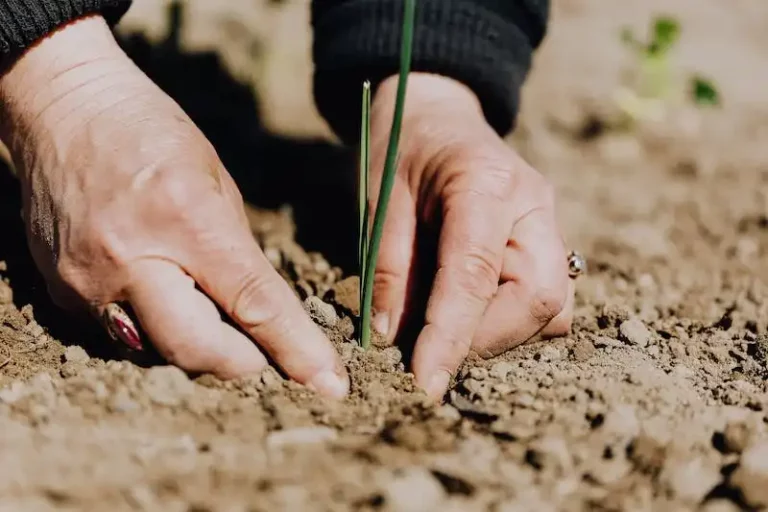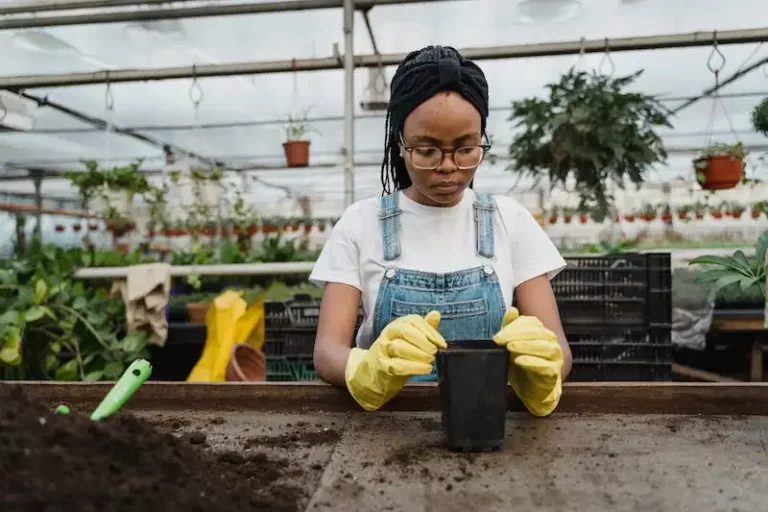If you have a greenhouse or conservatory, it is important to keep it clean and sanitized in order to maintain a healthy environment for your plants. Cleaning your greenhouse regularly can help prevent the spread of diseases and pests, as well as ensure that your plants have optimal conditions for growth. In this article, we will provide you with some tips and instructions on how to clean and sanitize your greenhouse.
Before you start the cleanup process, it is important to gather all the tools and cleaning supplies you will need. These may include a squeegee, pots, capillary matting, vinegar, a disinfectant cleaner, and a bucket of water. Additionally, you might also need some Barkeepers Friend or window cleaner to remove any grime or dust from the windows.
The first step in cleaning your greenhouse is to remove all the plants and pots. Once they are out of the way, you can begin sanitizing the surfaces. Start by using a brush or sponge to scrub any dirt or debris from the floors, tables, and shelves. Then, mix a solution of water and disinfectant cleaner and use a cloth or mop to sanitize these surfaces. Be sure to pay attention to all the nooks and crannies where pests and diseases may hide.
Next, sanitize the pots and flats that were removed from the greenhouse. Fill a bucket with water and add a small amount of disinfectant cleaner. Immerse the pots and flats in the solution for about five minutes, then scrub them clean with a brush. Rinse them thoroughly with water and allow them to dry. This will help prevent the spread of diseases from one plant to another.
While your pots and flats are drying, clean the capillary matting that you use to water your plants. Scrub it with a brush and rinse it thoroughly with water. If you have any vinegars, they might be useful for cleaning certain surfaces. However, be careful not to scratch or damage any plastic or painted surfaces when using vinegar as a cleaner.
Finally, when all the surfaces and pots are cleaned and dried, it is important to sanitize the inside of the greenhouse. Mix a solution of water and disinfectant cleaner, and use a cloth or mop to scrub the walls, windows, and floors. Pay special attention to areas that are prone to moisture and where mold and mildew might grow. You can also use a pressure washer for this step to give your greenhouse a thorough cleaning.
After the inside of the greenhouse is sanitized, it is also important to sanitize the outside. Use a mixture of water and vinegar or a commercial cleaner to clean the windows and remove any grime or dirt. Scrub the frames and any other surfaces that might collect dust or debris. Pay special attention to the gutters and downspouts, as these are important for proper drainage.
In conclusion, cleaning and sanitizing your greenhouse is essential for keeping your plants healthy and preventing the spread of diseases. Follow these steps and tips for a thorough cleanup. Gather the necessary tools and cleaning supplies, remove all pots and plants, scrub and sanitize the surfaces, clean the pots and flats, sanitize the capillary matting, and finally, sanitize the inside and outside of the greenhouse. By maintaining a clean and sanitized environment, your plants will thrive and you will enjoy a beautiful and healthy greenhouse.
Sanitizing Greenhouses
When it comes to sanitizing greenhouses, there are several methods and products you can use to ensure a clean and healthy growing environment for your plants. Here are some tips and techniques you can follow:
Cleaning Tools: Use a squeegee, hose, or pressure washer to remove dirt, dust, and debris from the inside and outside of the greenhouse. Scrub the windows and tables with a mixture of water and vinegar or a glass cleaner to remove any buildup or stains.
Disinfectants: It’s important to use a suitable disinfectant to kill any harmful organisms that may be present in the greenhouse. Jeyes Fluid, Physan 20, or a commercial greenhouse cleaner like Citrox are all effective options. Follow the instructions on the product label to ensure proper dilution and application.
Plant and Soil Sanitization: Sanitizing plant containers, pots, and soil is also important to prevent the spread of diseases and pests. Remove any weeds or dead plants, sanitize the containers with a mild bleach solution or a commercial disinfectant, and replace the old soil with fresh, sterilized soil.
Glazing and Frame Cleaning: Inspect the glazing material and frame for any cracks or damage. Repair or replace any broken panels or loose parts. Use a mild detergent or greenhouse cleaner to remove any dirt or organic deposits from the glazing, frame, and matting.
Capillary Matting Cleaning: If your greenhouse has capillary matting, it’s important to clean and sanitize it regularly. Remove the matting and wash it with a mild detergent or disinfectant solution. Allow it to air dry before putting it back in place.
Yearly Deep Cleaning: In addition to regular cleaning and sanitizing, it’s recommended to perform a deep cleaning of the greenhouse at least once a year. This involves removing all plants, tables, and equipment from the greenhouse, thoroughly cleaning and disinfecting all surfaces, and then allowing it to air out for a few days before reintroducing plants.
By following these cleaning and sanitizing tips, you can maintain a clean and healthy environment for your plants, ensuring their optimal growth and preventing the spread of diseases.
How To Clean A Greenhouse – Tips For Sanitizing A Greenhouse
Keeping your greenhouse clean and sanitized is important for the health and growth of your plants. A dirty and unkempt greenhouse can lead to the development of harmful organisms, such as algae, that can hinder plant growth and spread diseases. It also helps prevent the build-up of dirt, dust, and grime on the windows, which can reduce the efficacy of sunlight penetration. If you’re not sure where to start, here are some main tips and steps for a thorough greenhouse cleaning and sanitizing:
| Step 1: Remove all pots and containers | to make it easier to clean the greenhouse thoroughly. |
| Step 2: Sanitize the greenhouse surfaces | using a suitable cleaning material or solution. Vinegar or Armillatox are effective options for sanitizing your greenhouse. |
| Step 3: Clean the windows | using a squeegee or window washer to remove dirt and grime, ensuring maximum sunlight penetration. |
| Step 4: Clean the greenhouse floor | to remove any dirt or debris that may have accumulated over time. |
| Step 5: Keep the greenhouse dry | to prevent the growth of algae and fungi. Using capillary matting or keeping the greenhouse well-ventilated can help achieve this. |
| Step 6: Disinfect tools and equipment | by soaking them in a disinfectant solution to eliminate any potential pathogens. |
It’s important to follow the instructions provided by the cleaning product or solution brand to ensure proper sanitizing and disinfecting. Additionally, it’s a good practice to regularly sanitize your greenhouse, especially before the start of a new season or when sowing new plants.
So why is sanitizing your greenhouse important? By maintaining a clean and sanitized environment, you help prevent the spread of diseases and pests that can harm your plants. It also creates a healthier and more productive space for your plants to thrive. So don’t overlook the importance of regularly cleaning and sanitizing your greenhouse!
About Sanitizing a Greenhouse
Sanitizing a greenhouse is an essential step in maintaining a healthy growing environment for your plants. It involves cleaning and disinfecting the various surfaces, such as the glazing, watering system, and pots, to prevent the growth of harmful fungi and bacteria.
When it comes to cleaning the glazing, it’s important to use a gentle cleaning solution, as harsh chemicals or abrasive materials may cause damage. A mixture of water and vinegar can be an effective and eco-friendly option for cleaning the glass or plastic windows. You can also use a commercial greenhouse cleaning product or a solution of bleach diluted with water.
For the watering system, you’ll need to thoroughly clean all the hoses, nozzles, and trays. Remove any dirt or debris that might have accumulated and use disinfectants if needed. Barkeeper’s Friend, Jeyes Fluid, or rubbing alcohol can be effective cleaning options for the watering system.
Don’t forget to clean and disinfect the pots and flats as well. Plastic pots can be cleaned using a solution of bleach diluted with water, while clay pots can be scrubbed with a brush and rinsed thoroughly. If you’re using trays for sowing seeds or growing plants, make sure to clean them properly to prevent the spread of disease and fungus growth.
It’s also important to give attention to the main surfaces of the greenhouse, such as the walls, benches, and floors. Remove any dirt, grime, or debris using a broom or a vacuum. You can then sanitize the surfaces with a disinfectant solution or a mixture of bleach diluted with water.
During the winter months, while the greenhouse might not be in active use, it’s a good time to sanitize the entire structure. Start by cleaning the outside of the greenhouse with water and a mild detergent. Scrub away any dirt or moss that might have accumulated. You can then sanitize the surfaces using a disinfectant solution or a mixture of bleach diluted with water.
To sanitize the inside of the greenhouse, you can follow the same steps mentioned earlier. Make sure to clean all surfaces, including the glazing, benches, and pots. Use disinfectants to eradicate any lingering bacteria or fungi.
Sanitizing your greenhouse is not only important for the health of your plants but also for pest management and prevention. By keeping your greenhouse clean and free of disease-causing organisms, you can prevent the spread of pests and diseases that can be problematic for your plants.
In conclusion, the process of sanitizing a greenhouse involves cleaning and disinfecting all surfaces and equipment to maintain a healthy growing environment. By following proper cleaning techniques and using effective disinfectants, you can ensure that your greenhouse remains a safe and productive space for your plants.

